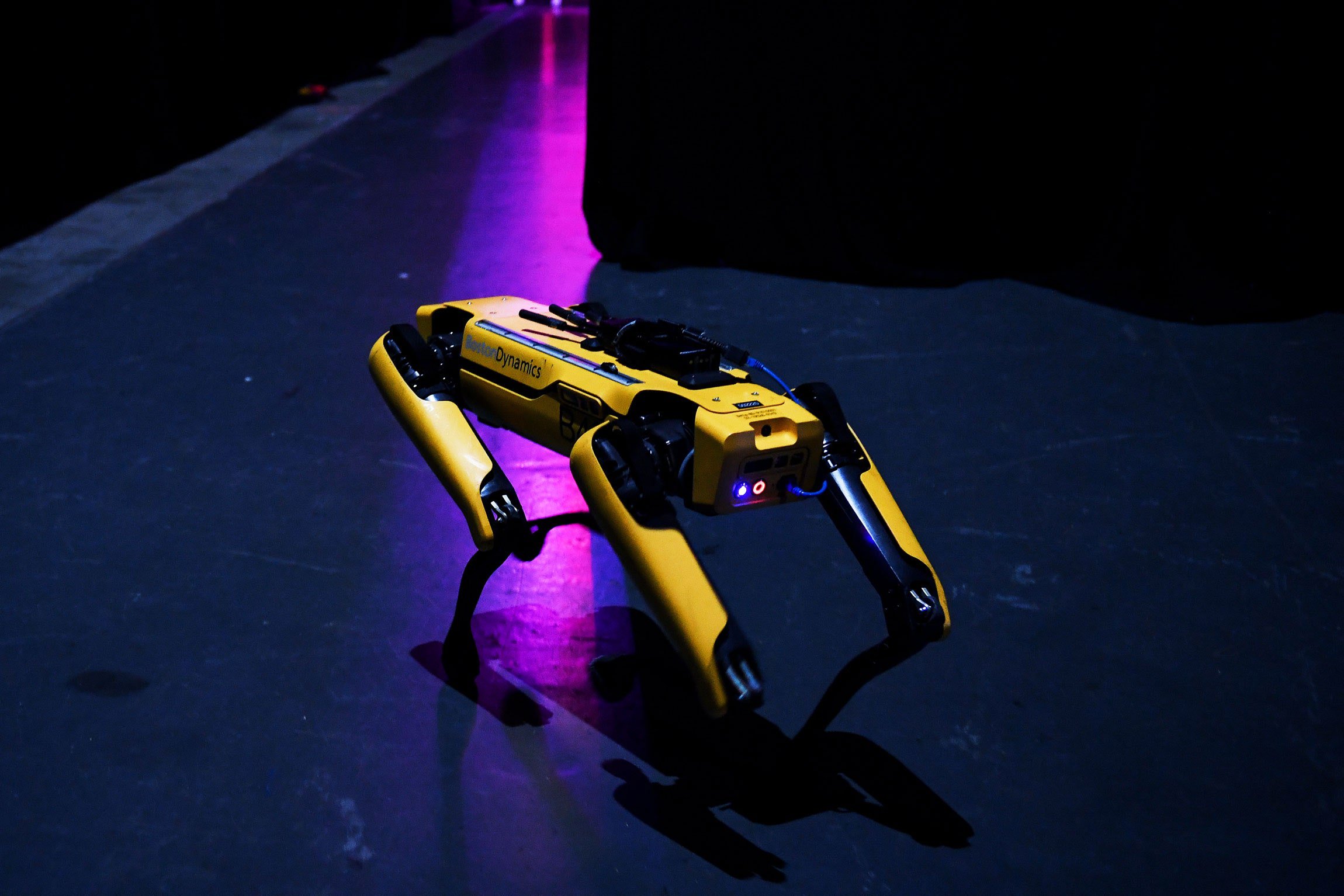The Black Mirror Robot Dog is Available for $74,500
Fans of the popular show Black Mirror are familiar with Big Bad, a gun-toting, knife-wielding robot dog that is part of the robot revolution that took place after the collapse of human society. Even though the robot dog in the TV series is a menacing robot, Boston Dynamics has created a real-life version of Big Bad, called Spot, but it’s a lot more friendlier and useful than the one on the show. Previously, Spot was available to a handful of early adopters, but now businesses, developers, and academics can buy Spot for $74,500. Let’s take a closer look at Spot and find out about some of his practical uses.

How Does Spot Work?
Spot uses LiDAR cameras which produce a 3D point cloud which is a visual representation of how he sees the world. These images would have to be annotated by humans where they would label all of the objects in the image. More advanced forms of annotation would include color grading the images with rainbow colors to give the machine learning algorithms depth perception. For example, since the ground is always the lowest object, it will always be blue, since this color has a short wavelength, further away objects would be red, orange, yellow, etc. This is how Spot is able to navigate his way around his immediate surroundings. Spot is very flexible in terms of how he perceives the physical world since the software development kit allows the developers to adjust this aspect with the use of computer vision models.
What Are Some Uses for Spot?
With the ongoing COVID-19 crisis, companies are increasingly reliant on automation and Spot fits in very well into the social distancing culture used by companies today. For example, Spot is already used by Brigham and Women’s Hospital in Boston to allow doctors to remotely talk with patients and screen them for the virus. Spot is fitted with an iPad and he walks around the waiting room allowing each person to speak with doctors and hospital staff while screening them at the same time.
Another use for Spot would be to replace human workers and places with hazardous working conditions. A lot of manufacturing, mining, electric utilities, and other environments rely on Spot to go into these sites for inspection purposes. Spot can autonomously walk around the sites, or a human operator can take control of the robot from any point in the world with minimal latency. If we return to lockdown restrictions in the future, Spot could replace humans in monitoring cafes, restaurants, and other buildings that are temporary off-limits to visitors.
Robot Bees
Dogs are not the only species being automated with Dutch scientists creating robot bees that could help us deal with the consequences of climate change, which is having a negative effect on the bee population. Scientists at the Delft University of Technology have created robot bees by reproducing some of the complex wing motion patterns and aerodynamics of fruit flies. This could potentially offer humans with an alternative if the bee population continues to be threatened. The wings of the created insects beat 17 times per second, just like the real ones, allowing them to fly and control its flight path through small adjustments in the wing motion.
The purpose of the robot bees is to pollinate plants since the real ones are being threatened by chemicals used for farming and there we don’t know what the future of the bee population will be like. The biggest threat to the bees are the pesticides used and other agriculture robots are being used to limit their use. Still, there are many challenges that need to be overcome. For example, there are 360 different species of bees and it is unclear how the new robot bees could replicate the pollination of each one. This project is particularly important for the Netherlands since they are one of the worlds largest exporters of agriculture and food products and bees are responsible for pollinating 80% of the crops in the Netherlands.
Mindy Support is Facilitating the Development of New Robotics
Mindy Support is one of the largest BPO providers in Eastern Europe with more than 2,000 employees in 6 offices in Ukraine. We provide comprehensive data annotation services to allow companies to focus on developing their product. Our size and location allows us to source and recruit candidates quickly and we can assemble even the most sizable team within a short time frame. Thanks to the rigorous QA processes we have in place, we can scale your team without sacrificing the quality of the work being done.




